Why is it that, with all the preparations that go along with travel, pet owners will take the time and effort to transport their pets? Honestly, because the bonds we have with our pets are so strong that we would go to great lengths not to leave them behind.
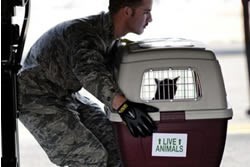 They are part of the family and they can travel with us, even if it involves flying, as long as we know what to do to help them get through the stress of travel and change of environment.
They are part of the family and they can travel with us, even if it involves flying, as long as we know what to do to help them get through the stress of travel and change of environment.
We are a mobile society. We relocate, we take vacations, and we visit friends and relatives. Many times, we travel to faraway places. This is why it is so important to learn what to do ahead of time to prepare your dog or cat when flying.
The most important thing you need is time. Why? Because unless your pet is a seasoned traveler, it is a bad idea to transport them as a result of a spur-of-the-moment decision. Dogs, even those who are disabled, are surprisingly adaptable to changes in environment, as long as they have past experiences to draw upon. The same goes for cats, although oftentimes preparation can take longer for them.
Here are five steps that you must take to make flying easier for you and your pet.
Step #1: Get a Good Crate or Carrier and Get it Early
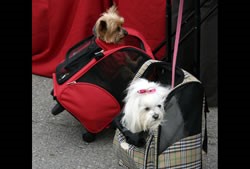 Getting a good pet crate or carrier is essential. Bad things happen when pets escape from their crates or carriers. Above all, you need to keep them safe when flying.
Getting a good pet crate or carrier is essential. Bad things happen when pets escape from their crates or carriers. Above all, you need to keep them safe when flying.
If your cat or dog is small enough to fit in an airline-compliant pet carrier and your airline permits pets in the cabin, then you will need to purchase a good carrier as far in advance of flying as you can.
When flying with a larger cat or dog, they will fly as accompanied checked baggage if your airline offers that class of service (Delta and United do not). If your pet is flying without you, then they will fly as unaccompanied air cargo — if your airline offers that class of service (Southwest, JetBlue and Frontier do not). Find airline pet policies here. In both of these cases, you will need an IATA-compliant pet crate. Get it as soon as you can. Really! Creating experiences for your pet will take time.
The goal is for your cat or dog to see their carrier or crate as their “safe place” when they are removed from their environment.
How to Start with a Pet Carrier?
With carriers, leave them in the most accessible and happy place in the house (next to dinner bowls, for example) positioned with all openings unzipped and available for your pet to explore. Put pads, toys, treats, and other familiar objects in the carrier. If your pet does not seem interested in going inside the carrier, then you will need to coax them into it with treats and games. Spend time introducing your pet to the carrier each day.
How to Start with a Pet Crate?
With crates, place the bottom of the crate in a place your pet normally rests or feeds. Put familiar items in the crate including bedding or pet pads, toys, and a “used” t-shirt with your scent on it. Feed them in the crate, if possible. Encourage them to rest in the crate.
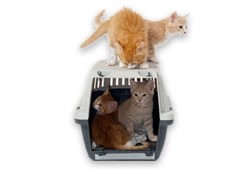 This step can take days or weeks depending on your pet’s personality, and know that it takes a great amount of patience on your part. Whatever you do, don’t give up. You are creating “experiences.”
This step can take days or weeks depending on your pet’s personality, and know that it takes a great amount of patience on your part. Whatever you do, don’t give up. You are creating “experiences.”
For crates, the next step is to put the top on the crate but leave the door open. Continue practices above for as long as it takes for your pet to be comfortable in his/her crate. The next step is to change your pet’s environment while in the crate or carrier. Start with a few minutes in a room in your home where they cannot see you. Then a dimly lit closet. Then, short rides in the car to fun places are in order. Do not ignore your pet during this time should they voice their opposition to this step. Calming reassurances will let them know you are nearby. Remember that if you rush this step, you may have to start over.
Always return home to lots of hugs, praises, and treats. Each time you venture out, it is another experience for them to rely on when travel day arrives. Lots of effort will pay off later.
Once you have gone through these steps, then try going through an old-fashioned car wash with your pet in the car. Once you go through it once together, send them alone. You will have the cleanest car in town and your pet will have another experience to draw upon. See how that works?
Step #2: Visit the Vet Within 10 Days of Flight

This is a must-do. Your pet must be healthy to endure the stress of flying. He/she must be checked for parasites and, in almost all cases, health certificates must be issued. Your dog or cat should be micro-chipped and their rabies vaccination should be current. Have your vet issue you a certificate with vaccine type, batch number, date administered and expiration date. Get refills of any medication that your pet may need during their travels. Get nails clipped and coat groomed if needed.
During this visit, you should discuss any special for your pet. These should be noted on the health certificate as well as the Shipper’s Declaration, which is taped to the top of the crate. Know that the airlines cannot check on your pet while the aircraft is in the air, so any medication should be administered before check-in.
If your pet is disabled and your airline has facilities to care for your pet, the disability should be clearly stated and included in the Shipper’s Declaration or attached to the top of the crate. Call the airlines to discuss your pet’s needs.
 Step #3: Book Your Flight
Step #3: Book Your Flight
Generally speaking, direct flights are always preferred. The less handling they have to undergo, the better. However, it is not always possible to get a direct flight. If this is the case, consider driving to a bigger, international airport to get a better, more direct flight. Driving in the car will be a good introduction to travel as you have practiced so much ahead of time, right?
If a layover is unavoidable, then be sure and keep the layover short and stay on the same airline in and out of your layover city as your airlines will not hand off your pet to another airline company. Your pet must be claimed and re-checked on the next airline. This is confusing to your pet as, if they see you, they will think you are taking them home and the trip is over. How disappointing if you are again separated. Many pet owners think that they will break up the trip with a night at an airport hotel and, although it is not a bad thing, it will complicate the trip if flying internationally. Once you leave the secure area of the airport, then you need to clear customs and enter the layover country. All import regulations must be met.
Given any opportunity, you do not want Murphy’s Law to come into play. (Murphy’s Law: if anything can go wrong, it will.) Get to where you are going as fast as you can.
Always confirm your pet’s flight reservation by phone, no matter how they are flying. Surprises at the airport are really upsetting so assume nothing when it comes to airline reservation agents.
Step #4: Travel Day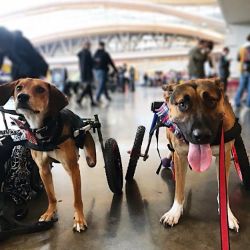
You should start tapering off your pet’s food several days before flying. On travel day, feed them half their normal allotment no sooner than 4 hours before leaving for the airport. Don’t restrict water, though. There should be plenty in the bowl that is attached to the door of the crate. You should have a good pet carrier/crate pad (or two) with you to absorb any accidents that they may have during the trip.
Give them a good walk before putting them in their carrier or crate to drive to the airport. A tired pet is a better traveler.

Take a selfie with you and your pet. If anything should happen along the way, pictures speak much louder than words.
Stay calm. Your pet will sense your feelings. If you are tense, they will be too. All their needs should be packed well ahead of time: leash, meds, brushes, towels, toys, etc. and the crate or carrier should be ready to go.
Step #5: Getting There
Once you get to your destination, claim your pet, go through customs if flying internationally, get your pet outside the terminal in their crate or carrier, and get them leashed before letting them out. This is the time for reuniting with your pet, and it is so important for their mental well-being. Take time for hugs, treats, walks, burning off energy, and (most of all) rejoicing.
Pay special attention to your pet for the first week or so. They will be unsure of themselves in new surroundings. Share fun experiences with them in their new home, whether temporary or permanent.
After all, experiences are what life is about, right? In fact, they are priceless.
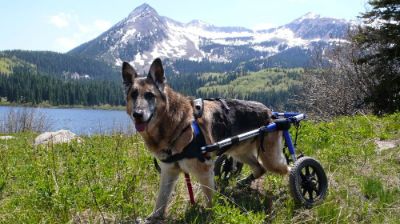
Susan H. Smith is President and Owner of Pet Travel, Inc. which has been serving pet owners worldwide traveling with and without their pets since 1998 through PetTravel.com, PetTravelStore.com and PetTravelTransport.com.


Related Articles:
Did we answer all your questions on "Travel Tips"?

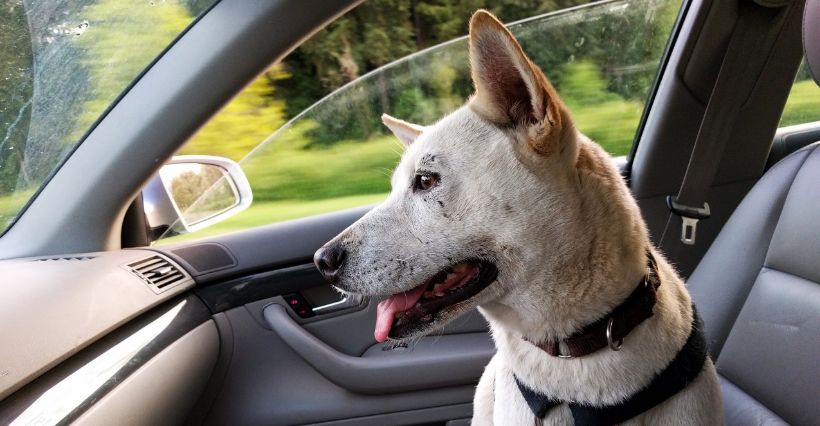
 They are part of the family and they can travel with us, even if it involves flying, as long as we know what to do to help them get through the stress of travel and change of environment.
They are part of the family and they can travel with us, even if it involves flying, as long as we know what to do to help them get through the stress of travel and change of environment. Getting a good pet crate or carrier is essential. Bad things happen when pets escape from their crates or carriers. Above all, you need to keep them safe when flying.
Getting a good pet crate or carrier is essential. Bad things happen when pets escape from their crates or carriers. Above all, you need to keep them safe when flying. This step can take days or weeks depending on your pet’s personality, and know that it takes a great amount of patience on your part. Whatever you do, don’t give up. You are creating “experiences.”
This step can take days or weeks depending on your pet’s personality, and know that it takes a great amount of patience on your part. Whatever you do, don’t give up. You are creating “experiences.”
 Step #3: Book Your Flight
Step #3: Book Your Flight




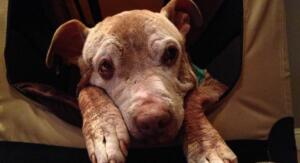


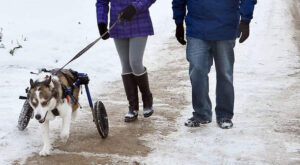
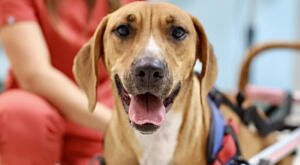
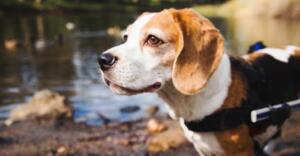
[…] 5 Tips for Stress-Free Air Travel with Your Pet […]
[…] you desire to take a trip with your beloved pet, and will be flying, there are some important strategies that you need to bear in mind. By paying […]